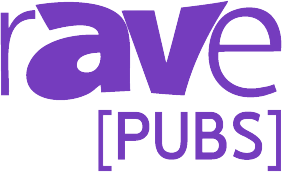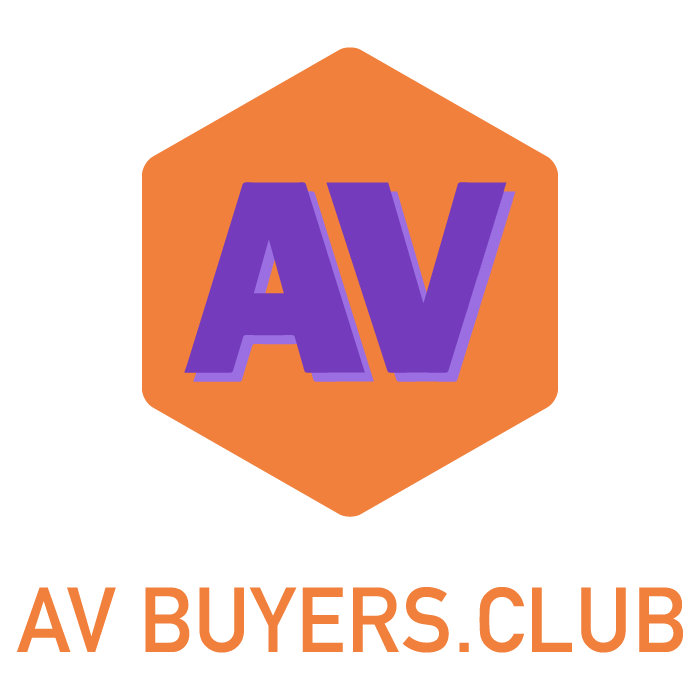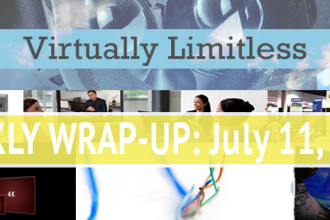Where Are We Going?
 I don’t have one of those “Ask Me” signs over my head like you see at conferences, but I’ve been asked one question a lot, lately. Where are we going? It’s more than a column, for sure. Most of the education and education tech world was searching that answer along side me at ISTE 2012 (International Society for Technology in Education) in San Diego. I was there covering the conference, and participating in a student-run education think tank hosted by Dell. I was so impressed with the students at the table: Zak Malamed, Allison Wu, and Nikhil Goyal. These students represent everything that is right about kids today, as well as some very good news about our future.
I don’t have one of those “Ask Me” signs over my head like you see at conferences, but I’ve been asked one question a lot, lately. Where are we going? It’s more than a column, for sure. Most of the education and education tech world was searching that answer along side me at ISTE 2012 (International Society for Technology in Education) in San Diego. I was there covering the conference, and participating in a student-run education think tank hosted by Dell. I was so impressed with the students at the table: Zak Malamed, Allison Wu, and Nikhil Goyal. These students represent everything that is right about kids today, as well as some very good news about our future.
Today, it’s no longer rare to have students contributing in education meetings, especially those involving technology. Most school districts with technology committees do that as a prerequisite. Not inviting students to share ideas is like not inviting customers to critique your products. Believe me, while the students at the Dell Think Tank may not have had the life experiences of the older crowd at the table, they unabashedly shared where we should be going in education and in education technology. It was not the destination of their parents! Their learning styles weren’t the 40-minute-in-your-seats blueprint, and they were adamant about changing outdated classroom design and learning delivery methods. Older adults sometimes seem to ramble on, afraid to cross over personal agenda lines, or take chances, but the young people at the education think tank pulled no punches. They were patient; they listened, and had purposeful direction, but not afraid to say what they thought. Those check points are necessities for any meeting—whatever the age of the participants.
 Taking some time to plan a sit down for talking to the Where we are going? question, rather than around it, should be a scheduled priority in business as well as education. Just avoid letting those meetings turn into reminiscences of prior accomplishments, as so often happens at gatherings. Talk and listen — to new ideas and new voices — and share thoughts that everyday time restraints won’t permit; you may discover a purposeful direction. Remember to take notes, assign tasks, agree to follow up with a set future meeting date and meet regularly. Too many good ideas turn to dust without commitment.
Taking some time to plan a sit down for talking to the Where we are going? question, rather than around it, should be a scheduled priority in business as well as education. Just avoid letting those meetings turn into reminiscences of prior accomplishments, as so often happens at gatherings. Talk and listen — to new ideas and new voices — and share thoughts that everyday time restraints won’t permit; you may discover a purposeful direction. Remember to take notes, assign tasks, agree to follow up with a set future meeting date and meet regularly. Too many good ideas turn to dust without commitment.
So, where are we going? The answers are multi-faceted, and depend upon where you’re standing. It’s not earth shattering to me that some education-related companies are moving away from larger conferences like InfoComm, and to venues like UBTech instead. CES and InfoComm are extravaganzas, and while it’s a great way to see many companies and leaders in one place, having meaningful conversations can be more difficult. Maybe the best analogy for this move is that it’s more like attending a smaller university than a larger one. I really like the “smaller classes” idea for these shows, and I’m thinking many companies are thinking along the same lines, too. If you have a message, you need to go where it won’t be lost, especially if that venue provides you with the right audience for that message. And if you don’t have a message it’s easier to meet with people who can help you gather thoughts to build and sharpen one.
Tim Goral, editor-in-chief at University Business has nurtured UBTech since its early days, so I asked him to comment on UBTech’s direction. “Although it began in 2004 with an emphasis on the convergence of AV and IT, UBTech has grown to encompass the larger and more pervasive role of technology in higher education. We recognize that new technologies are disrupting the standard models of teaching and learning, and UBTech is at the forefront of addressing not only the impact of technology in the classroom, but also in showing its impact across campus in all areas, including financial services, facilities planning, admissions and marketing. UBTech is about technology innovation that matters in higher education,” says Goral. If higher education is your destination, where you’re going next year should include a Florida trip to UBTech 2013.
 As for my recent ISTE12 destination, I easily found many of the same companies displaying their products and sharing their solutions with educators, education leaders and education purchasing agents. ISTE knows where it’s going, too; in 2013 it will be in San Antonio, Texas. At ISTE, the booths don’t have to be the size of small towns, the noise doesn’t have to blast eardrums, and the conversations seem to get to the right people. For instance, I had no trouble walking up to the NEC and BenQ booths to get treated royally. BenQ had this large two-touch screen that fit education needs perfectly. I handed my card over, so hopefully they’ll send me more info. ELMO had an interesting booth, where a young lady, named Yuka, was beautifully dressed in traditional Japanese clothing with a fan as an accessory — when opened, the fan broadcast the word ELMO. The company’s How to Tablet demonstration included teaching ideas and even some origami lessons. Each time I walked by the booth there was a packed audience. I told Matt Takekoshi, president of ELMO USA Corporation, that the clarity and brightness of the ELMO displays, along with good booth presenters was drawing people in. Educators were finding out what the tech could do as well as seeing it showcased. I have to say, at the best booths, at any conference, including ISTE, booth personnel stay off cell phones, and instead talk to and interact with conference attendees. More than their feet get tired — for sure. You and I know that good people representing a company make us want to know more about its products and solutions.
As for my recent ISTE12 destination, I easily found many of the same companies displaying their products and sharing their solutions with educators, education leaders and education purchasing agents. ISTE knows where it’s going, too; in 2013 it will be in San Antonio, Texas. At ISTE, the booths don’t have to be the size of small towns, the noise doesn’t have to blast eardrums, and the conversations seem to get to the right people. For instance, I had no trouble walking up to the NEC and BenQ booths to get treated royally. BenQ had this large two-touch screen that fit education needs perfectly. I handed my card over, so hopefully they’ll send me more info. ELMO had an interesting booth, where a young lady, named Yuka, was beautifully dressed in traditional Japanese clothing with a fan as an accessory — when opened, the fan broadcast the word ELMO. The company’s How to Tablet demonstration included teaching ideas and even some origami lessons. Each time I walked by the booth there was a packed audience. I told Matt Takekoshi, president of ELMO USA Corporation, that the clarity and brightness of the ELMO displays, along with good booth presenters was drawing people in. Educators were finding out what the tech could do as well as seeing it showcased. I have to say, at the best booths, at any conference, including ISTE, booth personnel stay off cell phones, and instead talk to and interact with conference attendees. More than their feet get tired — for sure. You and I know that good people representing a company make us want to know more about its products and solutions.
 I sat down with Adobe’s Johann Zimmern, group manager of worldwide K-12 education, for a chat about where Adobe was headed. We discussed some great little Adobe app downloads. I’ve been using Photoshop forever, and taught students with Elements version 2, which certainly date me. I still have it on an old machine, but these new touch apps are tablet gems. I highly recommend Adobe Photoshop Touch, Debut, Proto, Ideas, and my favorite, Adobe Kuler. You don’t have to be an expert to be creative with them. You’ll be amazed at the magic at your fingertips. I did ask if the usual Adobe purchase bundling applied, but it seems Apple has a single-purchase scheme for apps.
I sat down with Adobe’s Johann Zimmern, group manager of worldwide K-12 education, for a chat about where Adobe was headed. We discussed some great little Adobe app downloads. I’ve been using Photoshop forever, and taught students with Elements version 2, which certainly date me. I still have it on an old machine, but these new touch apps are tablet gems. I highly recommend Adobe Photoshop Touch, Debut, Proto, Ideas, and my favorite, Adobe Kuler. You don’t have to be an expert to be creative with them. You’ll be amazed at the magic at your fingertips. I did ask if the usual Adobe purchase bundling applied, but it seems Apple has a single-purchase scheme for apps.
I’ve known Zimmern for some time, so asking about Flash and HTML5 wasn’t a problem. It seems Adobe will continue to support Flash, but supporting HTML5 is the direction with purpose. All its CS6 products do that. I also want to make everyone aware that Adobe has always supported education with great pricing concepts, and asking the company for a district-purchasing model, or checking on its three-year subscription rates may fit even the strictest budgets.
Microsoft’s education direction is Office 365, but also some serious consideration of what the classroom of the future will look like. I learned a little of both when I tracked down Cameron Evans, CTO of education for Microsoft. “The Classroom of the Future is more of an experience than a place,” says Evans. “Technology has to be designed around people.” Evans sees this especially important in one of our biggest education challenges — graduation rates — high school and college. I’m glad he mentioned the latter. “Knowledge is important, but when you come into the workplace, you need know how,” says Evans. “To move to experience, the classroom of the future needs to be more dynamic than it is today.” Evans believes that the push will be to follow those universities and districts that have already moved education online. That said he believes that the physical place has to become more alive when students come in and their devices come in with them.
Evans points out that with gaming, students are used to having real time feedback, and understanding where they are with their own performance, and also where they are in relationship to everyone else. “Engagement needs to be far richer and far more dynamic, and that we are using telemetry from every event and non-event to inform instruction that completely wraps around each student,” says Evans. It seems that students like to know where they are going, too.
 Evans and Microsoft also have an Office 365 view, too, and it was begun at the higher education level. At ISTE Cameron shared K12 365 with me. 365 is a free Microsoft service, about a year off the launch pad, which hopes not only to get education to the cloud, but also provide everything educators and students would need when they get there. Microsoft has and can leverage many assets to do this. Evans talked about the ability for learning continuity for students not only at school, but at home as well. Other key benefits with Office 365 are collaboration and increased productivity. With 365’s storage students can keep their entire learning history in a cloud portfolio. I think that the real-time editing, using SharePoint and Web apps, puts Microsoft in a great position with schools that haven’t gone other routes, weren’t certain how or were waiting for more options. “Fidelity is so important for the accessibility of learning for all students, regardless of age, socio-economic status, or need for assistive technologies,” says Evans. “It is not a social network… students (and parents) do not have to worry about their data being mined. Students remain anonymous.” I think that Evans backs up what most are saying about getting to the cloud sooner than later, when he says, “If you’re not in the cloud… you’re going to have to tell the taxpayers why you’re wasting their money!” To find out more of what Carmeron Evans is thinking, check out his blog, Higher Innovation: http://higherinnovation.net/
Evans and Microsoft also have an Office 365 view, too, and it was begun at the higher education level. At ISTE Cameron shared K12 365 with me. 365 is a free Microsoft service, about a year off the launch pad, which hopes not only to get education to the cloud, but also provide everything educators and students would need when they get there. Microsoft has and can leverage many assets to do this. Evans talked about the ability for learning continuity for students not only at school, but at home as well. Other key benefits with Office 365 are collaboration and increased productivity. With 365’s storage students can keep their entire learning history in a cloud portfolio. I think that the real-time editing, using SharePoint and Web apps, puts Microsoft in a great position with schools that haven’t gone other routes, weren’t certain how or were waiting for more options. “Fidelity is so important for the accessibility of learning for all students, regardless of age, socio-economic status, or need for assistive technologies,” says Evans. “It is not a social network… students (and parents) do not have to worry about their data being mined. Students remain anonymous.” I think that Evans backs up what most are saying about getting to the cloud sooner than later, when he says, “If you’re not in the cloud… you’re going to have to tell the taxpayers why you’re wasting their money!” To find out more of what Carmeron Evans is thinking, check out his blog, Higher Innovation: http://higherinnovation.net/
I also had the opportunity to meet with Mark Horan, Dell’s vice president and general manager public accounts and Jeff McNaught, executive director and marketing chief officer for Dell Wyse Cloud Client Computing. Now, while all that is a mouthful, it is very significant, and I knew why Horan had an even larger smile than I was used to seeing. I also knew of Jeff McNaught; I’d seen him on one of Leo LaPorte’s Twit Live shows more than a year ago. Wyse was doing zero client work at the time, so seeing him at the Dell meeting was interesting. I don’t think the ink on his Dell business cards had dried. The Dell/Wyse Virtual Device is small, light, isn’t rocket science to hook up and with the Dell/Wyse T10 option, it makes computing endpoint virus immune. You still have to safeguard the server. This is good news for those districts thinking of going the zero client routes, and sticking with Microsoft solutions. Dell/Wyse also has their Pocket Cloud solutions for BYOT (Bring Your Own Tech). Checking into Bundling would be budget friendly as well. Please view my video interview with Jeff McNaught for more information.
 I must close with a mention of the wonderfully cheeky British crew from edugeek. They are the IT lifeline for many, and migrate across the pond for InfoComm and ISTE. For better or worse, we’ve sort of adopted each other into that special realm called friendship. If you haven’t checked them out, please do. They are an amazing crew online, and even more amazing in person. They seem to know where they’re going, too.
I must close with a mention of the wonderfully cheeky British crew from edugeek. They are the IT lifeline for many, and migrate across the pond for InfoComm and ISTE. For better or worse, we’ve sort of adopted each other into that special realm called friendship. If you haven’t checked them out, please do. They are an amazing crew online, and even more amazing in person. They seem to know where they’re going, too.
All that said it leaves so much more unsaid. But how can you really know where you’re going without a few excursions like this — and hopefully more of your own. Please check some of the links in this column and add them to your online destinations. Tell them I’ve sent you. And if you would like to tell me where you’re going, please contact me. Who knows, there may be a column or two in it, and sharing is what makes our day — and keeps all of us learning.
To see more of Ken Royal’s ISTE interviews, click here.
Ken Royal is a teacher/education and education technology blogger/reporter, video interviewer, podcaster, education event news commentator with 34 years of classroom/school and instructional technology experience. His teaching accomplishments include being four-time district teacher of the year, Connecticut Middle School Teacher of the Year and Bill and Melinda Gates award for Technology School of Excellence. Reach Ken at ken@ravepubs.com or on Twitter at http://www.twitter.com/kenroyal





